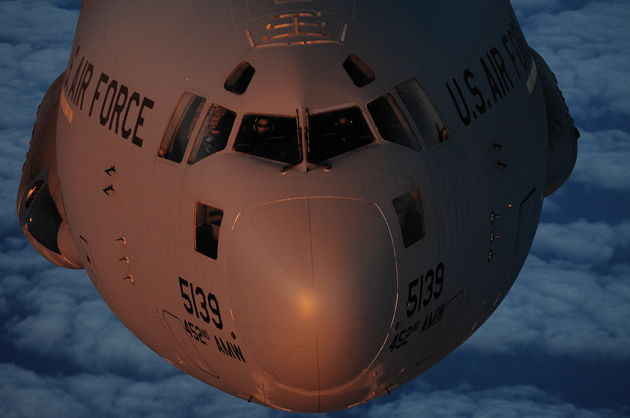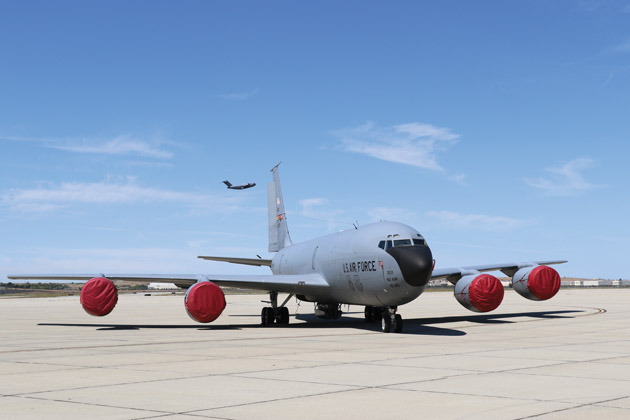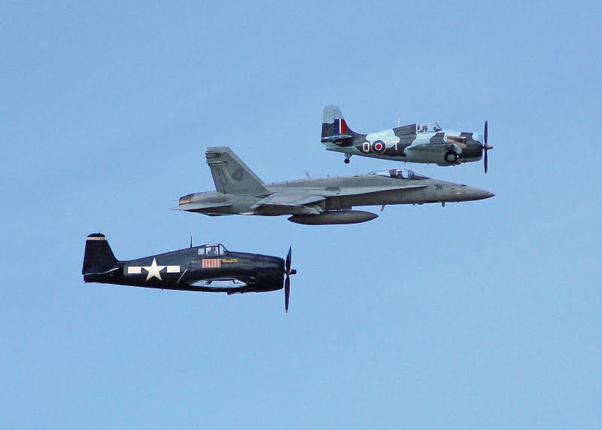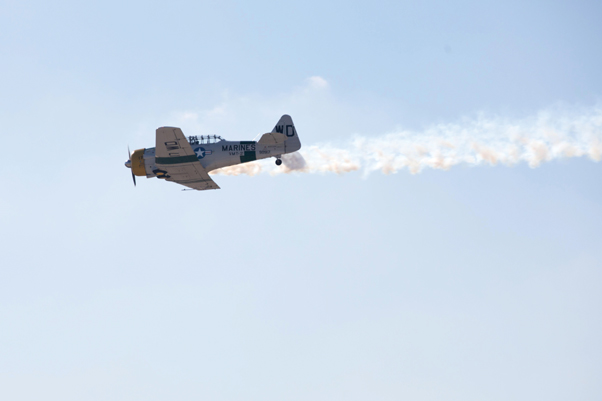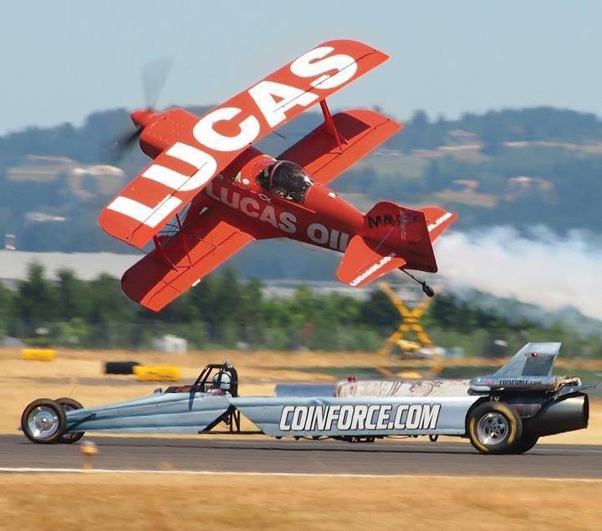COMMISSARY CASE LOT SALE MAY 5-8
Your March ARB commissary will have their May 2016 Case lot sale May 5-8. They will have savings of up to 60% on cases of your favorite products. Come out and take advantage of your benefit and save big with great prices on paper products, detergents, cereal, pet food and cases of can goods. They will also be offering great savings again this case lot on Johnsonville
sausage while supplies last. Don’t forget to check out the great prices offered in their meat and produce departments. There will be refreshments provided courtesy of their commissary vendors. The commissary is located east of March ARB at the crossing of 6th Street and Meyer Drive. Your March Commissary, It’s Worth the Trip!
VOLUNTEER VICTIM ADVOCATES NEEDED
The SAPR Program March ARB is looking for a select group of individuals to act as volunteer victim advocates with the Sexual Assault Prevention and Response Program, March ARB. Basic requirements include: Formal application, approval from the volunteers’ commander and 40 hours of Victim Advocate training from an Air Force approved course. Applicants will then be required to apply for certification with the National Organization of Victim Advocates (NOVA). There will be a 40-hour course offered at March ARB on May 2. Applicants to the program must have clean background check, possess excellent communication skills, be of outstanding character and judgment and willing to respond to incidents of a very personal nature with great discretion while adhering to Air Force protocol in respect to the SAPR program. Please contact the SAPR office March ARB at 951-655-4551 or email at frank.pavone@us.af.mil
APRIL MONTH OF MILITARY CHILD EVENT
Announcing the 3rd Annual April, Month of the Military Child event in Los Angeles on Sunday, April 17 from 1:30 – 4:00 p.m. This event held at the Los Angeles Public Library – Downtown, is a collaborative effort by members of the Los Angeles Veterans Collaborative – Families & Children Working Group. There will be activities and goodies for children up to age 12 years, but all are welcome to attend. Share this invitation with your military-connected families. Last year they hosted children from throughout the Southern California area. Complete the online registration to assist with planning for this event. Children registered by March 4 will receive a certificate from the Office of Mayor Eric Garcetti. Registration closes on April 10th. For more information or to register, contact Deborah J. Hayes, dejhayesconsulting@gmail.com. You may also donate items in support of this event, (children’s books, gift cards, small toys, etc.)
RETIREE ACTIVITIES OFFICE NEEDS VOLUNTEERS
The March Retiree Activities Office is in need of volunteers who can donate just three hours of their time weekly to help fellow retirees and their families. To volunteer or for more information, call 951-655-4077/4079.
JOINT OFFICER PROFESSIONAL DEVELOPMENT SEMINAR
The Defense Education Forum (DEF) in conjunction with the Reserve Officers Association Department of the Golden West with host a Joint Officer Professional Development Seminar (JOPDS) April 22-24, 2016 at the Holiday Inn Bayside, San Diego. The Department Convention is being held concurrently.
The JOPDS is one of the premier professional development opportunities available to our younger officers and is one of the only professional development seminars to emphasize joint service participation. To date, more than a thousand young officers from all services have benefited from these ROA DEF events.
The ROA Chapter #57, at March ARB, is part of The San Diego Chapter which is made up of Reserve Officers of the United States Armed Services. Their geographical area encompasses the greater San Diego area from the Mexican border north to the Orange County and Riverside County areas, and from the Pacific Ocean east to include Imperial County. Membership is open to any federally commissioned officer, warrant officer, of the National Guard, Reserve, Active Component, Former officers or Retired officers and their spouses and recently includes non-commissioned officers. The March ROA chapter Junior Officer Liaison is Capt. Lombardo at 951-655-5722.
Find The ROA Department of the Golden West, which covers California and Nevada, at roa.org/ca.
ENLISTED DEVELOPMENTAL EDUCATION BOARD
Air Reserve Personnel Center officials will release the Invitation to Apply and open the application cycle for the annual Enlisted Developmental Education Board Friday, Feb. 5. The EDEB will convene May 16 at HQ ARPC. All applications are due to ARPC no later than April 15, 4:30 p.m. MT. Call the Total Force Service Center at DSN 665-0102 or 210-565-0102 for questions or further information.
MARCH FIELD AIRFEST ON WEB/SOCIAL MEDIA
The March Field AirFest Website is now live at http://marchfieldairfest.marchfss.com. Also, like us on Facebook, and follow us on Twitter and Instagram for AirFest updates. Find us on Facebook at March Field AirFest; on Instagram @MarchFieldAirFest; on Twitter @MarchAirFest. Join the conversations!!
EDUCATION & TRAINING OFFICE TO PROVIDE MASS BRIEFINGS
The March Education and Training will hold mass briefings on Sundays during each Unit Training Assembly for any Tuition Assistance, GI Bill and Community College of the Air Force (CCAF) inquiries. Their schedule is as follows:
Community College of the Air Force (CCAF) 8 – 8:30 a.m.
Tuition Assistance/GI Bill 8:30 – 9 a.m.
There is no need to sign up for the briefings. For more information, contact the March Education and Training office at 951-655-6739.
BASE FOD WALK SCHEDULED FOR APRIL 19
The next Base Foreign Object Walk is scheduled for Apr. 19 with a show time of 7:15 a.m. sharp in the vicinity of Air Traffic Control Tower, north of the construction barriers. There will be flags designating the official starting point. Please bring a plastic trash bag, like the one in your shop/office trash can. Be on time. Due to construction in this area, parking is very limited so carpooling is encouraged. Be diligent if walking or driving in this area as there is heavy equipment and semi-truck traffic traversing this reduced-access, traffic zone. Safety first! Thank you for your support!
SARC HOSTS FREE MIND BODY RESILIENCY CLASSES
Are you interested in learning more about the Mind and Body connection and how this can promote better overall health? Then come join the interactive and informational series of one-hour classes based on the Benson-Henry Institute for Mind Body Medicine’s Resilient Warrior. Classes are scheduled on the A and B Unit Training Assemblies through September 2016. Topics for the six-part series include
– Stress Reactions and Relaxation Response
– Getting Good Sleep
– Mindfulness and a Positive State of Mind
– Yin and Yang of Resiliency
– Yoga & Journaling
– Social Connections & Communication
Time and Location:
UTA Sundays, 11 a.m. – noon
Bldg. 470, room 205
Contact frank.pavone@us.af.mil or 655-4551 for more information. No reservation required.
REGISTER FOR YELLOW RIBBON EVENTS
Upcoming dates for Yellow Ribbon events are Mar 18-20, Apr. 22-24, May 20-22, Jun 17-19. For more formation, contact 1st Lt. Shelley Lawrence, your 452nd Air Mobility Wing Yellow Ribbon representative, for details at 951-655-4615.
BACK STREET GRILL HOURS
Hours of operation for the newly renovated Back Street Grill are Monday – Friday for breakfast from 6:30 to 10 a.m., for lunch from 11 a.m. to 1:30 p.m.; UTA weekends for breakfast (Sat & Sun) from 5:30 to 9 a.m., for lunch (Sat & Sun) from 11 a.m. to 1:30 p.m., for dinner (Sat only) from 4 to 8 p.m. Additionally, the Back Street Grill proudly serves Starbucks Monday – Friday from 6:30 a.m. to 3 p.m. and UTAs (Sat & Sun) from 6 a.m. to 3 p.m.
GRILL NIGHT AT SALLY’S ALLEY
Every Wednesday night starting at 4 p.m., Sally’s Alley is open for business with Grill Night. For more information, call them at 951-653-2121.
FITNESS CENTER NEWS
The March Fitness Center has received the Wellbeats Virtual Group Fitness Kiosk. This kiosk allows members to participate in virtual fitness classes.
Daily WellBeats Fitness Schedule is:
Mondays: 10:30 a.m. – REV (spin); 12:15 p.m. – Yoga
Tuesdays: 12:15 p.m. – Fit for Duty; 4:00 p.m. – REV
Wednesdays: 6 a.m. – Yoga/Pilates; 11 a.m. – V.I.B.E./Toning; 12:15 p.m. – REV
Thursdays: 11 a.m. – REV; 12:45 p.m. – Fit for Duty
Fridays: 11 a.m. – Core; 11:15 a.m. Pilates
Wellbeats offers many more classes available at the members’ request.
FIP (Fitness Improvement classes) available through our Wellbeats Kiosk.
Additional opportunities for fitness:
Tuesday, 11 a.m. and Thursday, 12:15 p.m. – Battle ropes training
Monday, 10:30 a.m. and Wednesday, 11:30 a.m. – TRX
A & B UTA Saturdays, 7 a.m. – Wellbeats Fit for Duty
A & B UTA Sundays, 7 a.m. – Wellbeats REV
A UTA Saturdays, 5 p.m. – Virtual Strength “Fit for Duty”
B UTA, 5 – 7 p.m. – Pick-up basketball
Coming in 2016: Inter-Services Golf Tournament, Team Cohesion Challenge, Armed Forces 5K Run.
Call the Fitness & Sports center at 951-655-2292 to sign up or for more information on these programs.
Class descriptions:
Circuit Training – a high intensity interval training class that integrated cardio and muscular endurance exercises
Core – various classes from our WellBeats system that focus entirely on working out your core
Fit for Duty – a high-energy, extreme, conditioning workout led by service members with expertise in fitness training
Functional Fitness – A type of high-intensity interval training combining cardio and weight training into one short but intense class with mobility drills, mountain climbers, lunges, push-up, kettlebells, goblet squats duck walk, run.
Fusion – an integration of yoga and Pilates exercises with attention to breath, form, flow and body balance.
Kinetics – a total body, multi-activity class that includes sports-style cardio intervals with resistance training circuits and muscle isolation work
REV – an indoor cycling class that combines sprints, climbs, intervals, drills, terrain, and technique training
Stomp – a total body, cardio-driven step class as it was originally meant to be taught
TKO – a blend of martial arts disciplines that includes a combination of punches, kicks, and strikes
TRX – introductory class that teaches basic exercises to strengthen core and transition into more advanced techniques on the TRX suspension system
V.I.B.E. – multi-dimensional dance exercises ranging from Latin to urban, hip-hop and more
Zumba/Zumbathon – well-known dancing class featuring exotic rhythms set to high-energy Latin and international beats (Zumbathon is a two-hour Zumba class in which participants can win prizes.)
OUTDOOR REC UPCOMING 2016 TRIPS
| The outdoor recreation division has scheduled trips for target audiences of Single Airmen (SAP), Pre/Post-Deployers (RecOn) and Deployed-affected family members (DP). There is special pricing for these members (SAP/RECON/DP column). All others (military/DOD ID card holders and their guests) are invited on a space-available basis at the higher, per-person price listed in the EOE column. Reservations are on a first-come, first-served basis, and can be made by contacting ODR at 951-655-2816. |
| DATE – TRIP |
SAP/RECON/DP |
EOE |
| Apr. 9 – Hollywood Hills Horseback Riding |
SAP – $15 |
$75 |
| Apr. 21-23 – Black Canyon Canoe Trip |
SAP – $35 |
$112 |
| May 13-15 – Whitewater Rafting |
DE – $30 |
$130 |
| May 28 – Deep Sea Fishing |
SAP- $25 |
$102 |
| Jun. 10-12 – Spelunking |
SAP – $40 |
$110 |
| Jun. 18 – Skydiving |
SAP – $40 |
$199 |
| Jul. 16 – Couples Ballooning |
RecOn/DE – $30 |
$148 |
| Jul. 30 – La Jolla Kayaking |
RecOn/DE – $15 |
$70 |
| Aug. 13 – Catalina Adventure |
RecOn/DE – $40 |
$150 |
| Aug. 27 – Bridge to Nowhere Bungee Jumping |
SAP – $20 |
$85 |
| Sep. 3 – Skydiving |
RecOn/DE – $40 |
$199 |
| SEP. 3 – Zipline/segway tour |
SAP – $40 |
$200 |
| Sep. 17 – Deep Sea Fishing |
RecOn/DE – $25 |
$102 |
| Sep. 24 – Tandem Hang Gliding |
RecOn/DE – $50 |
$199 |
OUTDOOR REC EQUIPMENT RENTALS
Outdoor Recreation has a variety of equipment for rent such as camping gear, water sports equipment, bicycles, and trailers to carry it all! Special orders for Callaway, Odyssey, Cleveland, Never Compromise, Nike, Bag Boy, Sun Mountain and Staff golf equipment are also available. Download the full equipment rental price list at MarchFSS.com, call 951-655-2816 or come on by for more information.
MARCH TICKETS & TOURS
Amusement Park Specials
Castle Park: $16 per person includes unlimited rides, water park access, miniature golf and the new Sky Rider.
Disney 3-Day Park Hopper military special: $140 per person (adult/child)
Discount Movie Tickets
Available for only $10 each and valid for Regal Cinemas, United Artists Theatres and Edwards Cinemas.
Hotel Discounts
Receive 10% off any Best Western and 15% off any Choice Hotel
Visit the Tickets & Tours page at MarchFSS.com and download the Discount Ticket Price List for a full list of discounts tickets prices, hotel discounts and special promotions. Call Tickets & Tours at 951-655-4123 for more information.
